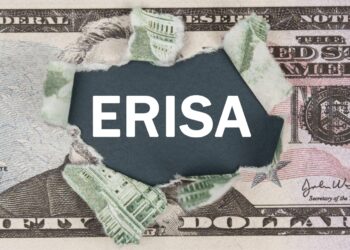Disability judges approved 54% of all Social Security disability claims in 2022, but their approval rates vary.
A new study from Atticus shows that there are administrative law judges (ALJ) who approve over 90% of disability applicants, while some only approve as few as 10%. To conduct this study, Atticus ran the numbers on the nearly 1,300 judges who made a Social Security decision in 2022 to find their approval and denial rates.
Since the pandemic, there are plenty of people impacted by long COVID which can qualify those affected for disability benefits. There are as many as up to 23 million Americans estimated to have long COVID. Recent research has shown that long COVID is keeping as many as 4 million people out of work.
Social Security disability programs play a key role for individuals who are no longer able to work due to a disability or health condition such as long COVID. They receive a vital source of income and receive healthcare which can be crucial in treating their medical condition. The SSA estimates that 1 in 4 of today’s 20-year-olds will be disabled before reaching age 67.
There are two federal disability programs – Social Security Disability Insurance (SSDI) and Supplemental Security Income (SSI) – in the United States. Both provide life-changing access to monthly payments and healthcare (Medicare or Medicaid). SSDI is a “forced insurance” program—primarily for Americans who have worked most of their lives and paid into the SSA. SSI is needs-based, and available to Americans who have limited income and assets.
Requirements for these programs can vary but their application and appeal processes are the same. Both programs require you be medically unable to work full-time, and that your condition will last for at least a year.
To start receiving disability benefits, applicants submit an initial application and then wait five-six months for an initial decision. Approximately 79.3% of applicants are denied when they first apply—even though many later qualify. Those who are denied may apply for “reconsideration”—at which point 87% are again rejected. If they appeal that decision, they’ll be assigned a hearing with an administrative law judge. It’s at this application stage that disabled Americans have their best approval chances.
At a hearing, judges will review an appellant’s information such as medical information and work history. Applicants can explain to the ALJ, first hand, their symptoms, and how their conditions limit their ability to work.
The judge will also ask vocational experts to testify about potential jobs the applicant could continue to work with their limitations. An applicant’s attorney can then cross-examine these vocational experts on behalf of their client.
In 2022, over half (54%) of applicants who attended a hearing were approved. And while many judges approved near this rate, some were outliers—potentially impacting the outcomes for many hopeful disability applicants.
As shown by the drastic difference in approval rates, a judge’s determination is always going to be subjective to some extent. Judges worked across 168 Social Security hearing offices and delivered about 322,000 total decisions. In 2022, 123 judges approved 75% or more of their cases while there were 39 judges with an approval rate of 25%.
Atticus has made a full list of a judge’s approval and denial rates. Unfortunately, plaintiffs don’t have the option to choose the judge they will be assigned to. Historically, plaintiffs are assigned a judge depending on their location and where the judge’s regional hearing office is located. This has slightly changed during the pandemic but judges are still assigned to applicants and cannot be changed.
What applicants can do for their hearing is hire a disability lawyer who is well-versed in disability benefits hearings. Government studies show applicants with lawyers are three times more likely to win benefits than those without. The lawyers can help better prepare an applicant for the hearing and help them make the best possible case. Lawyers are familiar with how to cross-examine the experts called onto the stand.
If an applicant is faced with a judge who has a low approval rate and is rejected, they can appeal the decision again. These appeals, called federal court appeals, have lower win rates — but are still a good potential next step for applicants.











Comments 1
What are the odds of getting approved had a stroke I can no longer walk leg has very bad weakness in it the neurologist my DR wrote a note to ss explaining it my emg was abnormal have all the doctors paperwork got denied twice